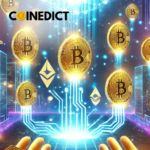DID, Metaverse, Immersive Experience, On-chain Visualization, On-chain Interaction
In recent years, the “metaverse” has become the new consensus of the global technology giants on the development trend of the Internet. Facebook, Microsoft, Nvidia and other web2 giants take the lead in making adjustments at the strategic level and layout the metaverse track. In the eyes of ordinary people, however, the “metaverse” is more of a hype concept.
The reason why “Metaverse” is difficult to understand is that it integrates almost all high and new technologies, but the value of the metaverse still needs to return to ordinary users. Today, we will review the experience dimension of different scenes of the metaverse project and explore what kind of innovative experience the metaverse can bring to ordinary users.

What’s the threshold to the metaverse?
art with two representative metaverse projects: Axie infinity and the Sandbox. The development of these two metaverse projects still has a lot of criticism.

Low DAU
As a simulation and extension of reality, the game is very close to the metaverse in form, thus becoming the first application scene of the metaverse to land. In those years, many institutions announced to invest resources in the metaverse world, spending huge amounts of money to buy virtual land and so on.
A year later, it seems the concept of Decentraland has not evolved as quickly as many people expected. The Sandbox, Decentraland, looks the same as it did in the early 2000’s, and the play process is still the same. There is little to do on the metaverse and your daily life is much less decentralised than in traditional games.

Lack of Scenes
The metaverse reduces the restriction of physical space, physiology and other real factors on people’s way of life, and everyone has the opportunity to realize the interaction with the metaverse. Through the virtual human, users can go to any place they want to go, and people who are unable to move in reality can move their bodies freely in the virtual world.
The Sandbox was successful because they brought metaverse real estate into the mainstream, but they didn’t give users the possibility to use that land to create more value. The metaverse is a fusion of real and virtual worlds. How to connect the virtual world with the real world is a problem faced by every metaverse project.

Lack of Immersive Social Experiences
Offline social have regional and time limit, the traditional web2 social also has problems such as high-friction, tedious experience,etc.The metaverse project, which blends DID and visualized the social scene, seems to offer a breakthrough for the next generation of socializing. However, limited by computing power conditions, network speed, and the development of ER, there has not been a widely used metaverse social product. Projects like Secondlive or lifeform also does not provide a breakthrough immersive social experience for its users.
Dimensionality of metaverse experience: visual, immersive, multi-scene
The metaverse will change the ownership of user data and maximize the expansion of UGC scenarios. The convergence of the virtual world and the real world will bring unprecedented user experiences and new business models. To bring users a comprehensive, visual, multi-scene immersive experience. And how to achieve this dimension of experience, we can learn from two emerging metaverse projects.
Live4: Virtualized Social Network based on DID
http://live4.world/
Live4 is a web3 virtual world based on visualized digital identity, which intends to provide users a free, interoperable, UGC-supported space for a more immersive web3 social experience. Both Web3 and Web2 users can experience a one-stop visualization of interactions that no longer requires switching between multiple platforms or applications.
Live4 provides a visualization platform for one-click publishing based on the realization of visualized digital identity. Businesses can visualize various activities, scenes and interactions in the form of 3D space, such as NFT Mint, Launch, AMA, social graph, live streaming, providing users with a highly immersive social experience.

Gather Town: Visualizing the Virtual Office
Gather.town is a metaverse platform focused on virtual office, a virtual meeting software that integrates office, social, learning and gaming applications. It uses pixel graphics and spatial audio technology to create a great immersive experience. Each registered user is able to customize their persona and build virtual scenes on the platform to achieve the real sense of virtual office.
Gather.town not only drives a change of virtual meeting, but also extends the social scene outside the offline workplace and work in the product, helping users to get the most real social and life experience while working remotely. The platform is also gradually being applied to a wider and more diverse range of scenarios such as campuses, weddings and family gatherings.

Summary
Over the past year, the term “metaverse” has burst into the public eye and sparked much discussion, offering a vision of a perpetual, shared virtual reality fusion space and a science fiction future.
The path of the metaverse is unclear, but user experience is the key to any technological product entering the mainstream market. Looking back at the history of smartphones, what wins the mass market is not the first to have this technology, but a better product experience through the market.
The metaverse application should not be limited to the experience of pure digital space, but should focus on the real scenario of users, lower the threshold of user access, and increase the immersive experience of users.











